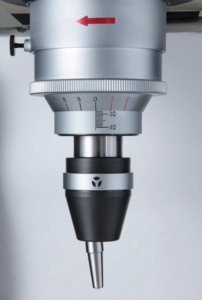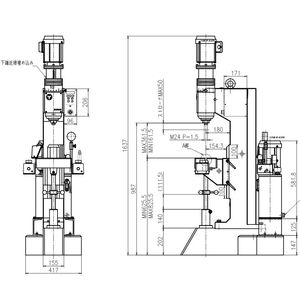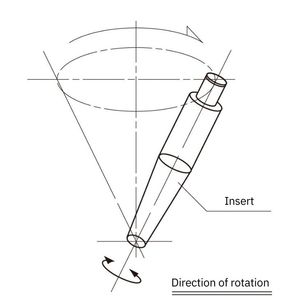
All categories
Featured selections
Trade Assurance
Buyer Central
Help Center
Get the app
Become a supplier

(1098 products available)















































A brake shoe adjuster is used in vehicles to enable the appropriate adjustment of brakes, especially in heavy-duty vehicles like trucks and lorries. The brake shoe adjuster helps the drivers of these vehicles maintain the right distance between the brake shoes and the brake drums. This ensures an even and effective braking performance.
In the past, manual brake shoe adjusters were used. These required mechanics or drivers to use a manual adjuster tool to physically adjust the brakes shoes. This type slowed down the vehicles' braking performance and required more effort to push the brake pedals. Fortunately, self-adjusting brake shoe adjusters were developed. These are more convenient and safe as they automatically adjust the brake shoes to the required positions whenever the brakes are applied. The self-adjusting brake shoe adjuster increases the braking efficiency without much pressure on the brake pedal.
The brake shoe adjuster also comes in two main types: the manual and self-adjusting brake shoe adjusters. The manual brake shoe adjuster usually has a wrench or slot for an adjusting screw. This makes it easy for drivers to check and make adjustments without using many tools. On the other hand, the self-adjusting brake shoe has a ratchet wheel and light spring. This makes it more suitable for light and heavy-duty vehicles. Unlike the manual brake shoe adjuster, the self-adjusting brake shoe prevent the need for much force or pressure to make adjustments.
Furthermore, the brake shoe adjuster can be available in different materials depending on the manufacturer. The most common brake shoe adjusters are made of cast iron and steel. Cast iron is a strong and durable material that can withstand heavy loads and pressure. It is also resistant to corrosion, which increases the lifespan of the brake shoe adjuster. On the other hand, steel brake shoe adjusters are more durable and can be used for longer periods than cast iron.
The brake shoe adjuster also has a zinc coating. This prevents rust and corrosion, increasing the lifespan of the brake shoe. The zinc coating can also improve the brake shoe adjuster's performance in extreme weather or high-temperature conditions. Due to the different materials, the maintenance and installation requirements may differ. For example, steel and cast iron brake shoe adjusters need to be lubricated regularly to function efficiently, while the self-adjusting nylon and aluminum adjusters do not require much lubrication.
Below are some key features of the brake shoe adjuster that are important for customers to know.
Size
The brake shoe size is different depending on the vehicle. It measures the length and width of the shoes. The standard sizes are 7, 8, and 16 inches. When choosing a brake shoe adjuster, ensure it is the right size for the vehicle's brake shoes.
Type
Different types of brake shoe adjusters are available. The most common ones are the manual and self-adjusting types. A manual brake shoe adjuster requires a person to adjust it while self-adjusting, and it automatically adjusts when the brakes are applied. Choose an adjuster type depending on the vehicle's brake system.
Material
The brake shoe adjuster is made of different materials suitable for various applications. Steel is the most common material because it is durable and can withstand high pressure. It is also corrosion-resistant, so it can last a long time without rusting. Choose an adjuster made of steel or other suitable materials for specific applications.
Below are some maintenance requirements of the brake shoe adjuster.
Regular inspection
Users should inspect the brake shoe adjuster frequently to ensure it works well. During the inspection, look for signs of wear and damage. They should also check if the teeth are worn out and if the adjusting screw moves smoothly. If there are any faults, repair them immediately.
Lubrication
The adjusting screw and other moving parts of the brake shoe should be lubricated regularly. This will reduce friction and prevent wear and tear. Use the right lubricant for the brake shoe adjuster. The users should also follow the manufacturer's instructions when lubricating the adjuster.
Proper usage
Always use the brake shoe adjuster properly. Do not force the adjustment screw or use it on brake shoes that do not fit. Using it improperly can damage the adjuster and the brake shoes.
Replace when necessary
With time, the brake shoe adjuster will wear out. When this happens, the brakes will not work properly, and the brake warning light will be on. Replace the adjuster immediately when users notice it is worn out to maintain the vehicle's safety.
Retailers need to learn about the different factors that affect the quality and performance of brake shoe adjusters before they can successfully meet their customers' needs. Here are a few recommendations to help them choose the right products.
Consider Vehicle Compatibility
Customers will want brake shoe adjusters specifically designed for their vehicle's make and model. Therefore, it's important to check the compatibility information provided by the manufacturer.
Moreover, vehicles with different braking systems, such as drum brakes or disc brakes, require different types of brake shoe adjusters. So, remember to consider the type of braking system when selecting the right brake shoe adjuster for a vehicle.
Additionally, customers who use heavy-duty trucks or tow trailers will need more robust and durable brake shoe adjusters. For such vehicles, prioritize heavy-duty brake shoe adjusters that can handle the increased braking demands.
Check Quality and Durability
Prioritize brake shoe adjusters made from high-quality materials, such as hardened steel or durable alloys, to ensure longevity and reliable performance. It's also important to look for products with anti-corrosion coatings or treatments to withstand harsh environments and road conditions.
Consider Aftermarket vs. OEM
Original Equipment Manufacturer (OEM) brake shoe adjusters are made by the manufacturer of the vehicle or its parts. They are usually more expensive than aftermarket ones but are designed to fit perfectly and function like the original parts. On the other hand, aftermarket brands may not perfectly fit or last as long as the original parts.
Ease of Installation
Some brake shoe adjusters require specialized tools or advanced mechanical skills for installation, while others are user-friendly and can be installed with basic tools. Choose the ones that are easy to install and don't require much knowledge or special tools for adjusting the brakes.
Seek Professional Advice
If unsure about choosing the right brake shoe adjuster, consult a professional mechanic or automotive expert for recommendations based on specific vehicle requirements and needs.
There are several steps that people need to follow when replacing a brake shoe adjuster.
Remove the Wheel and Brake Drum
To get started, remove the wheel and brake drum. Take off the lug nuts and wheel, then use a screwdriver to pry the brake drum off the wheel hub.
Inspect the Brake Assembly
After this, inspect the brake assembly to know whether the brake shoe adjuster needs replacement. Take note of the brake setup's orientation and components. This is essential during installation.
Remove the Old Brake Shoe Adjuster
At this point, disconnect the old brake shoe adjuster. Remove the C-clip or pin and detach the adjuster from the brake shoes. Make sure to remember the installation method.
Install the New Brake Shoe Adjuster
Now, install the new brake shoe adjuster. Connect it to the brake shoes and secure it with the C-clip or pin. Ensure it is properly aligned and fits well.
Reassemble the Brake Assembly
Reassemble the brake assembly. Refer to the previous notes to ensure everything is returned to its original position.
Reinstall the Brake Drum and Wheel
Finally, reinstall the brake drum and wheel. After attaching the brake drum to the wheel hub, replace the wheel and lug nuts. Ensure the wheel is properly aligned and secure.
Q: How often should the brake shoe adjuster be adjusted?
A: Generally, it should be adjusted every 5,000 to 10,000 miles or at least once a year. However, this can vary depending on driving conditions, load, and frequency of brake use.
Q: Can I use a brake shoe adjuster on disc brakes?
A: Brake shoe adjusters are typically used in drum brake systems. Disc brakes use a different mechanism, so a brake shoe adjuster is unnecessary.
Q: What are the signs of a failing brake shoe adjuster?
A: Signs include reduced braking performance, longer brake pedal travel, noise during braking, and the brake warning light being activated. In such cases, a brake shoe adjuster may be needed.
Q: Are brake shoe adjusters interchangeable between different vehicles?
A: No, brake shoe adjusters are designed for specific vehicles based on their size and braking system requirements. It's essential to use the correct type for the particular vehicle.
Q: Can I perform a brake shoe adjuster myself?
A: While it is possible to some extent, it requires mechanical knowledge and the right tools. It is recommended to have a brake shoe adjuster fitted or adjusted by a professional mechanic to ensure safety and correctness.